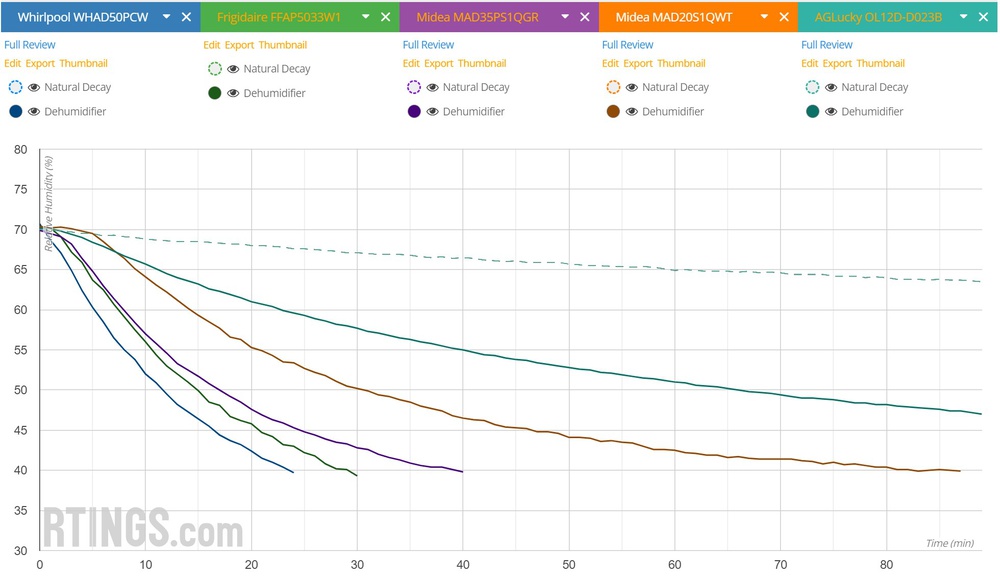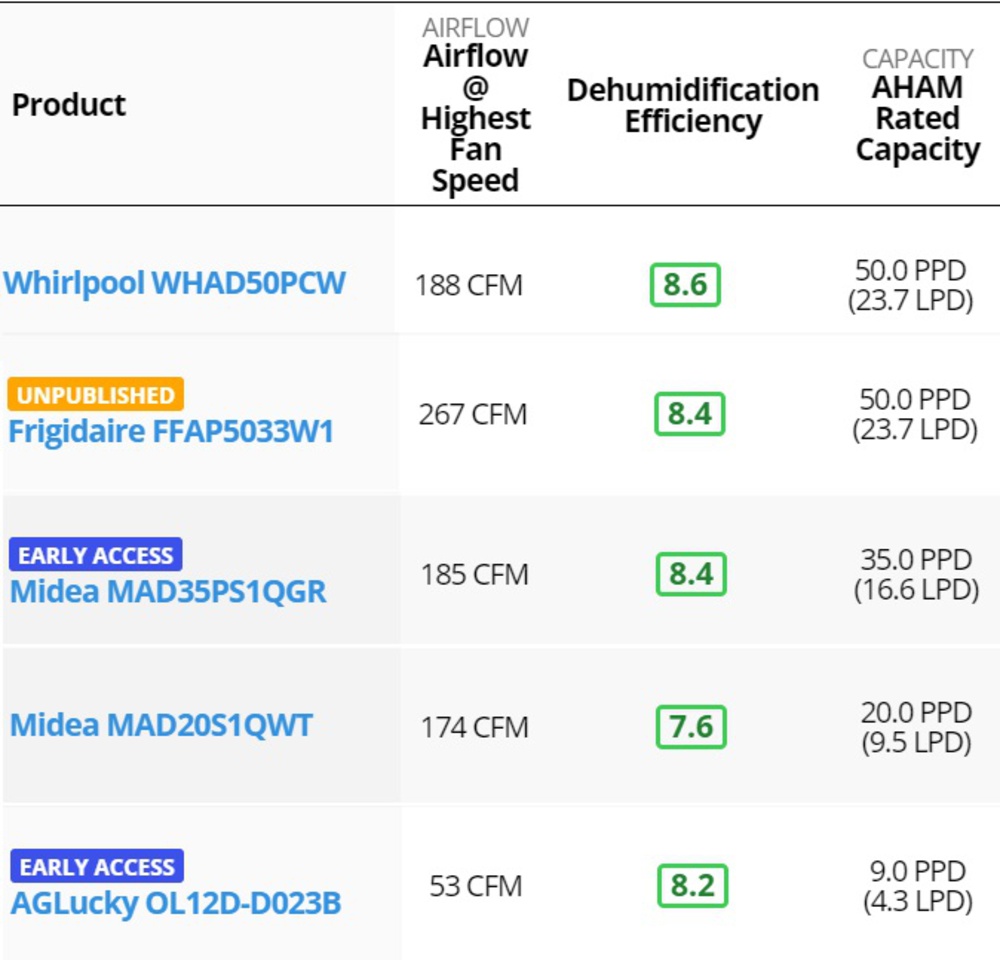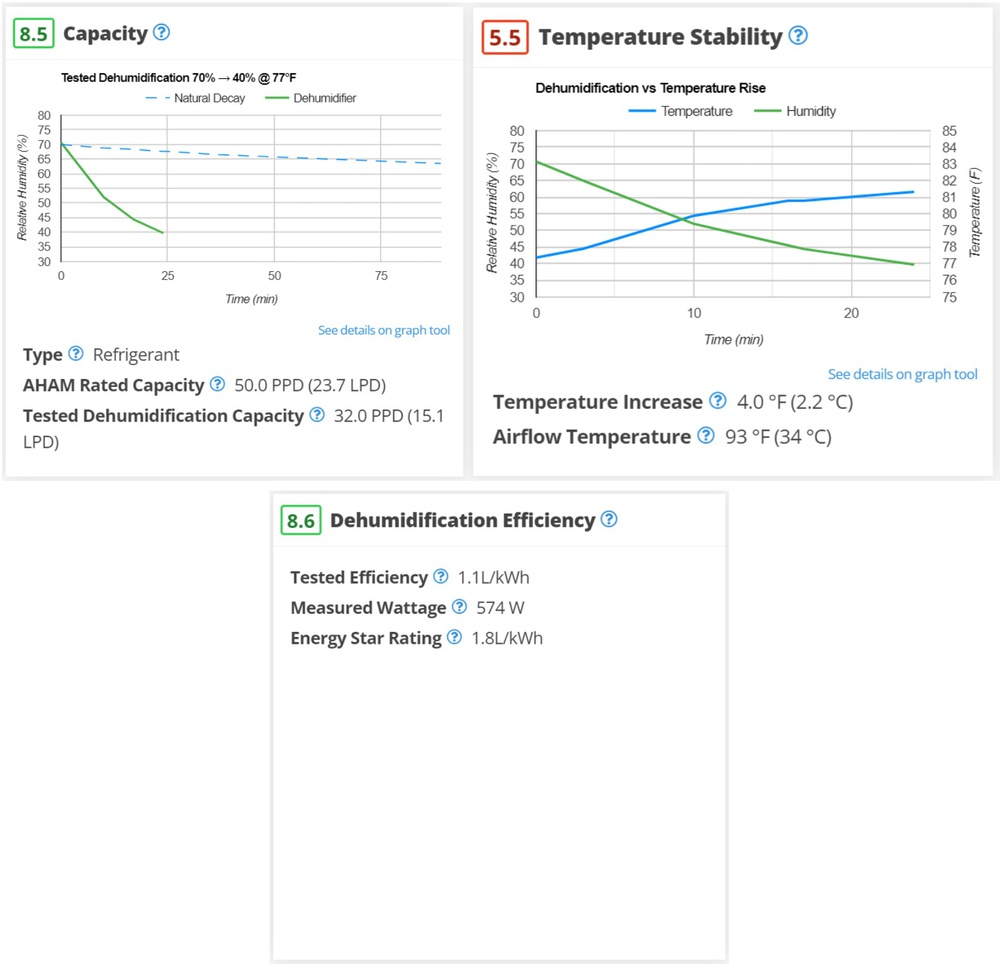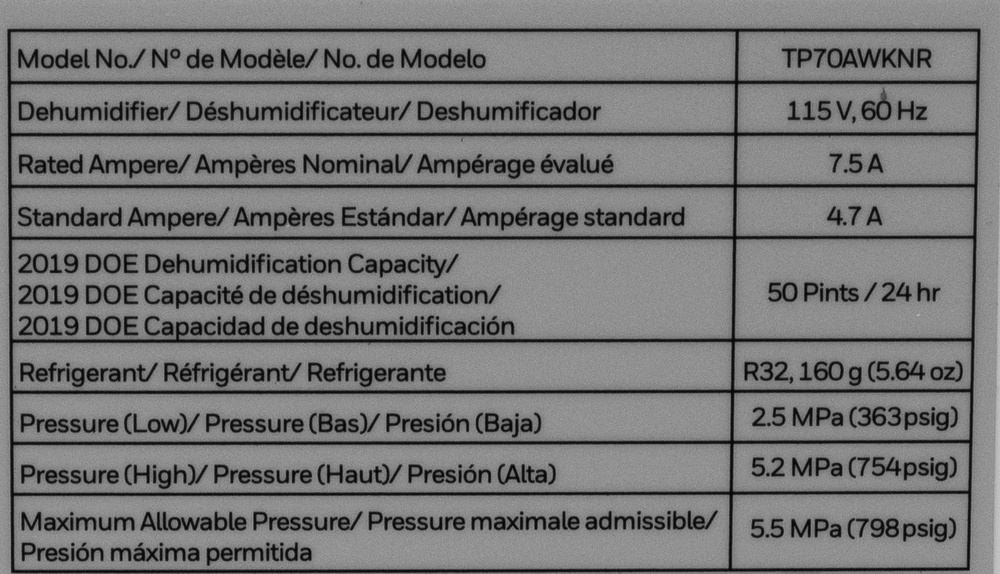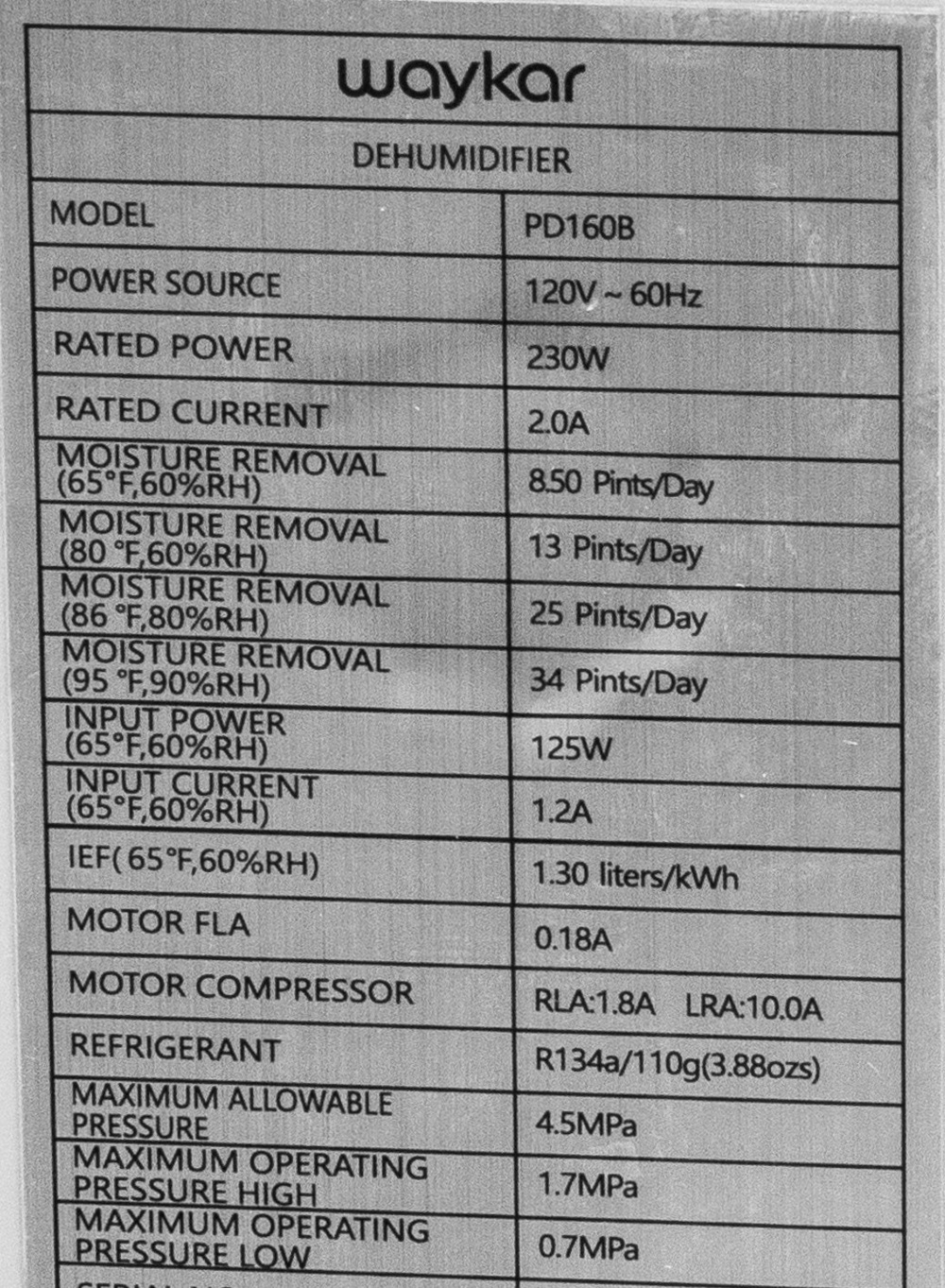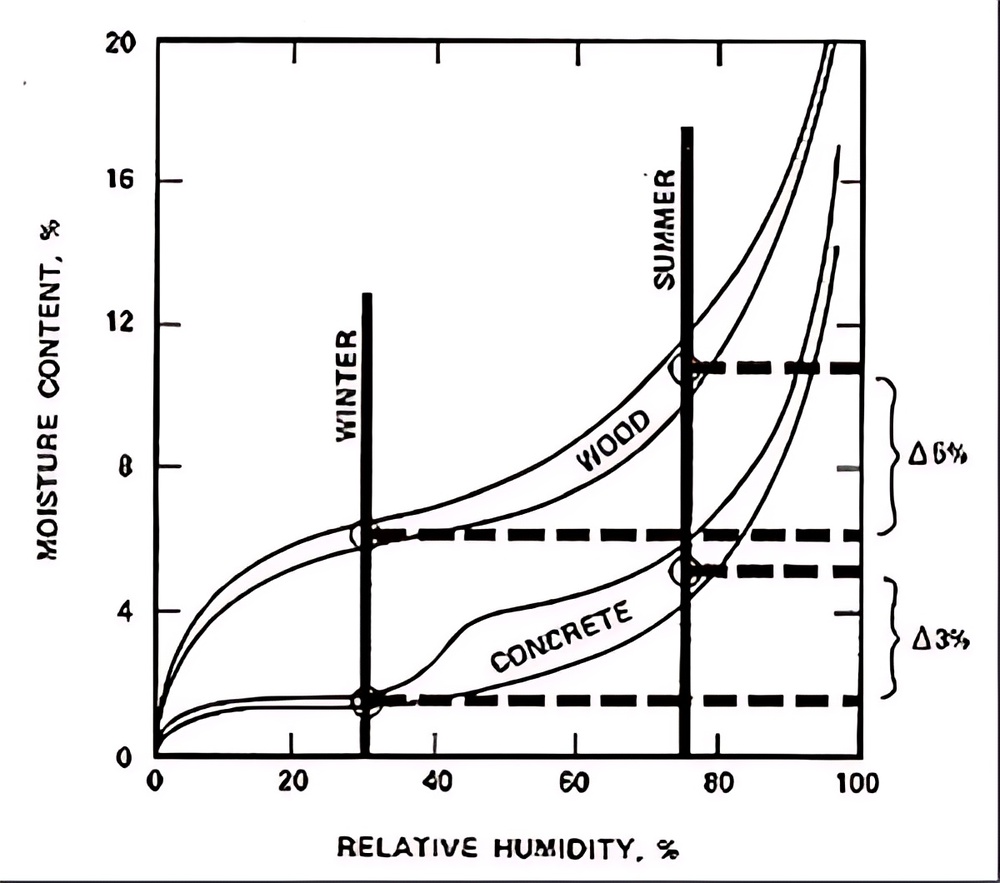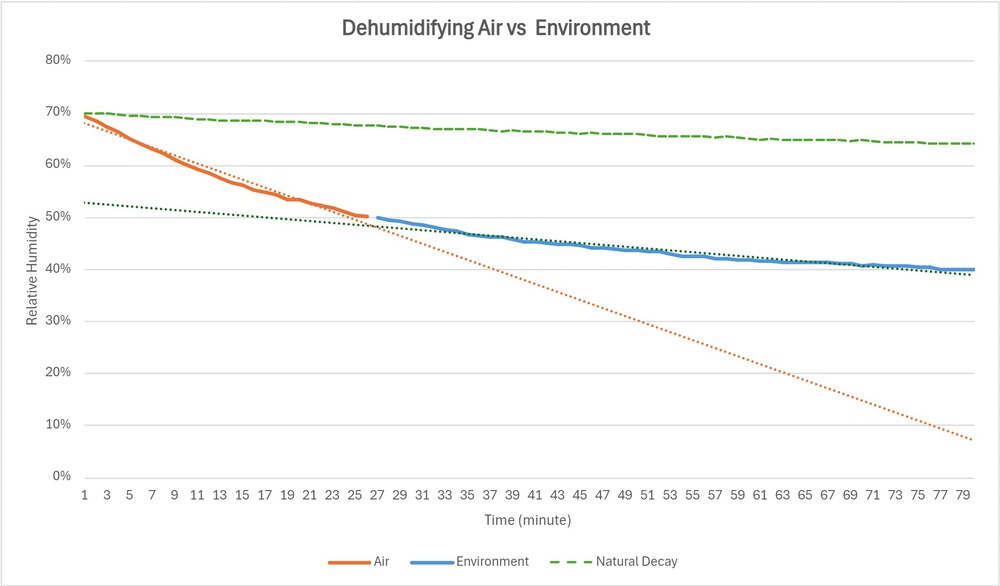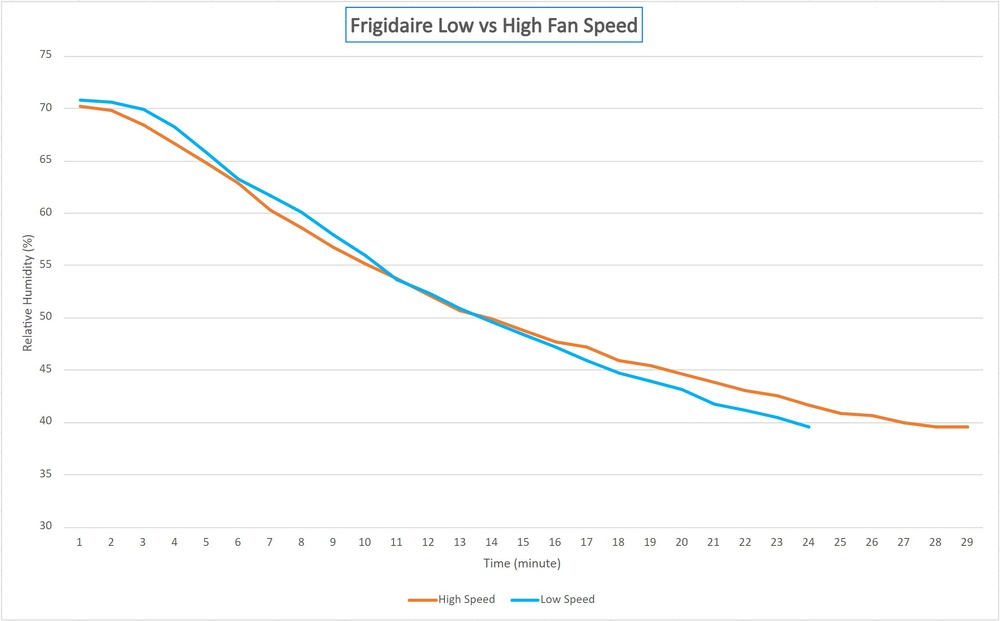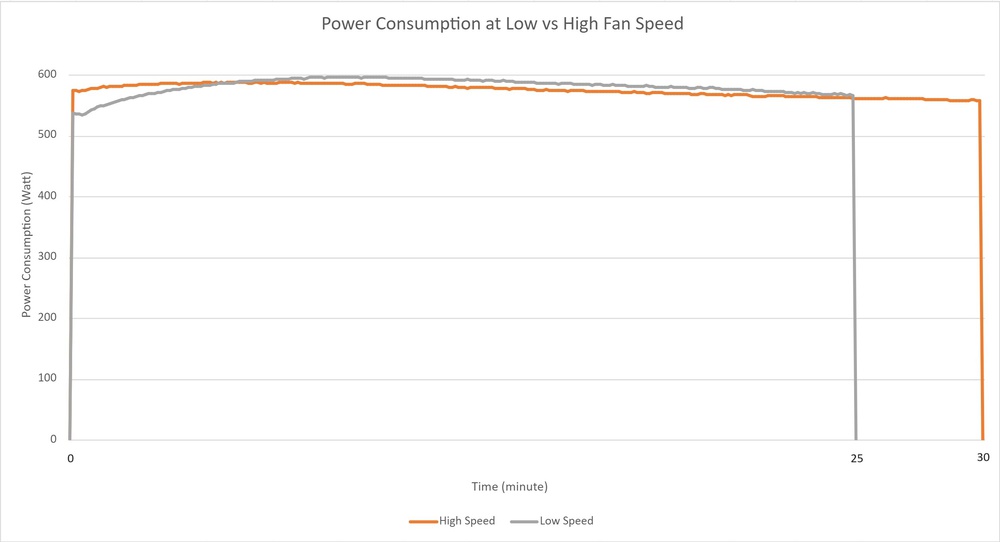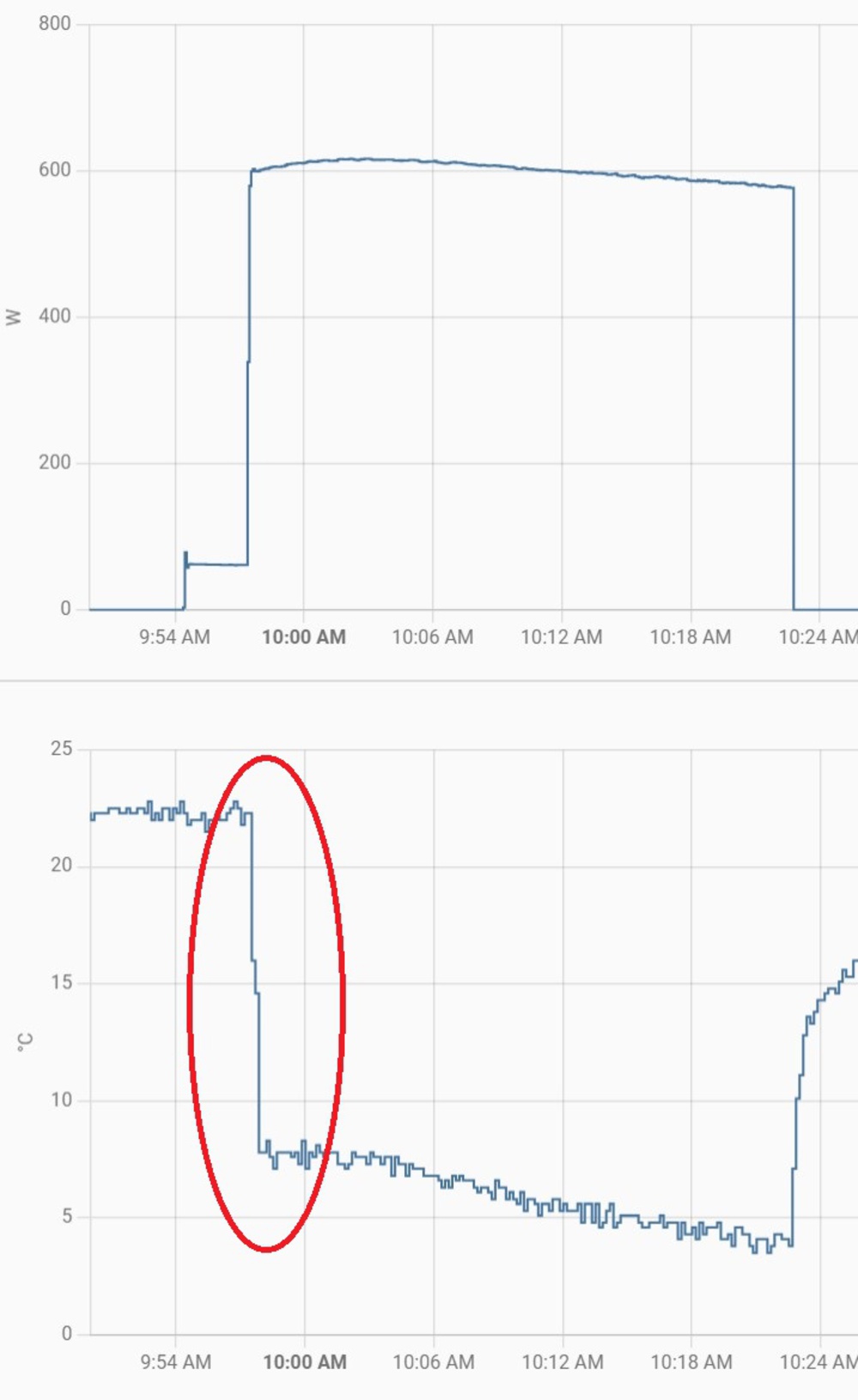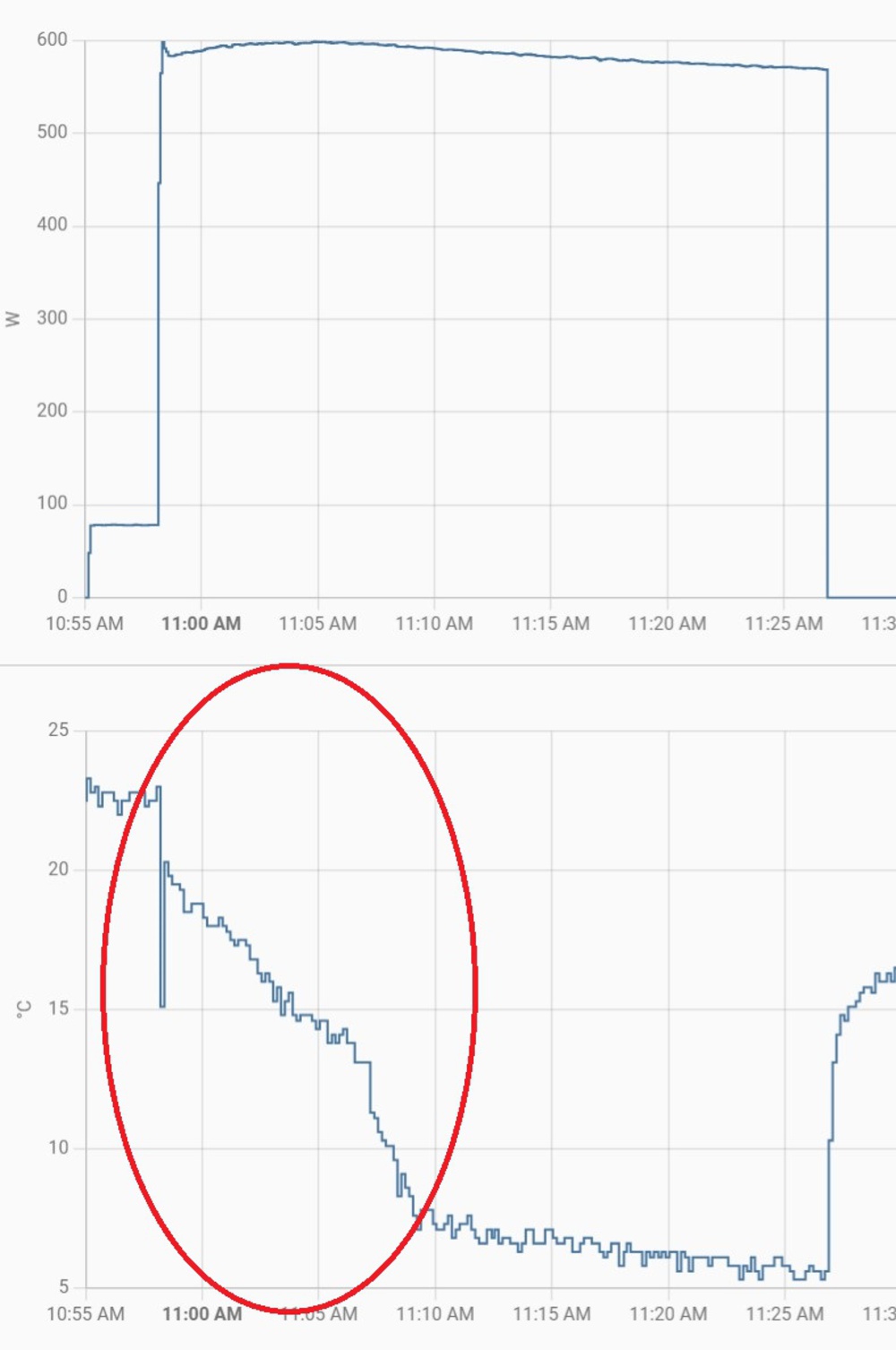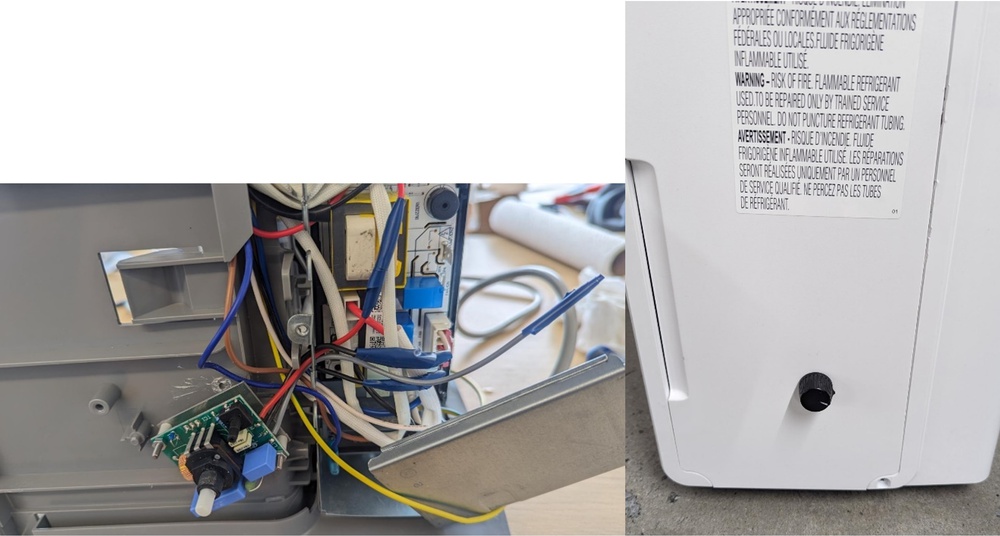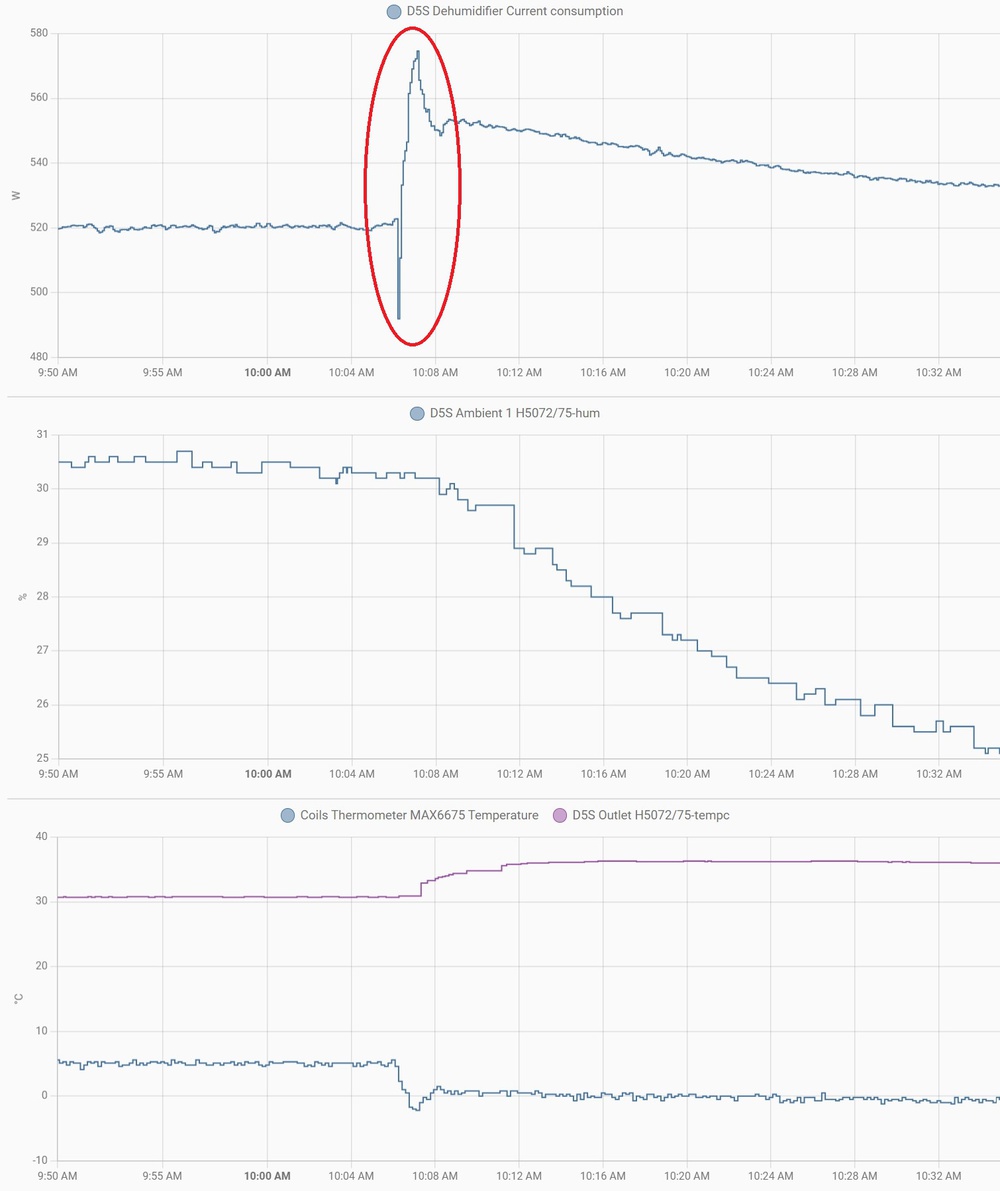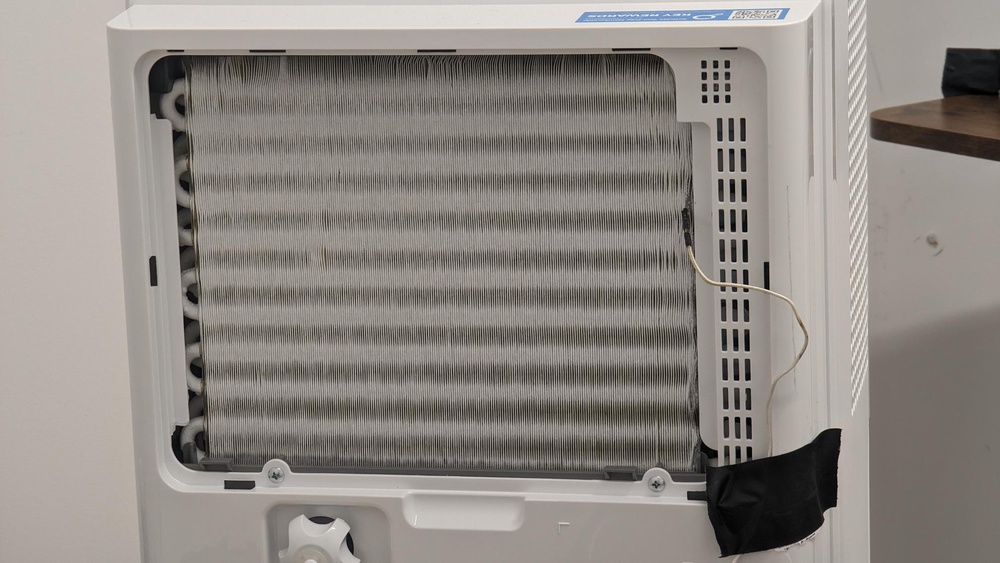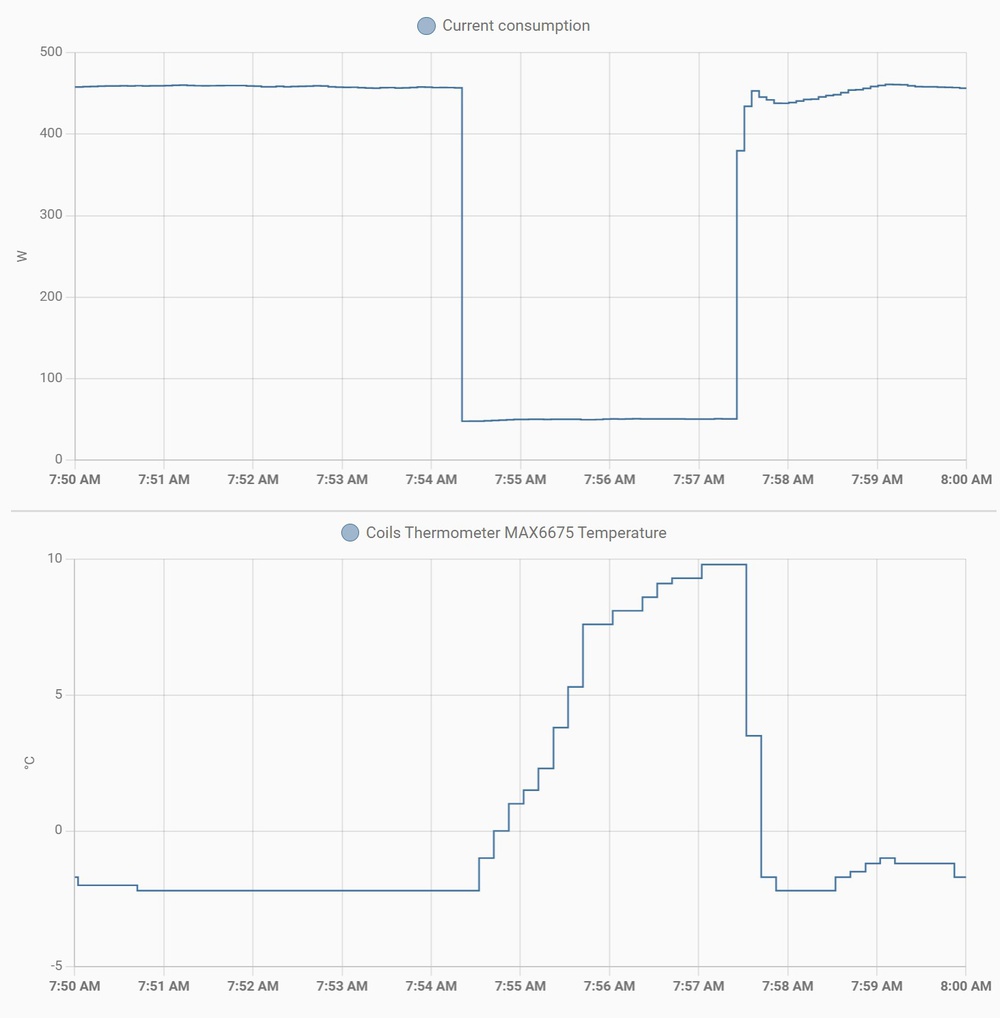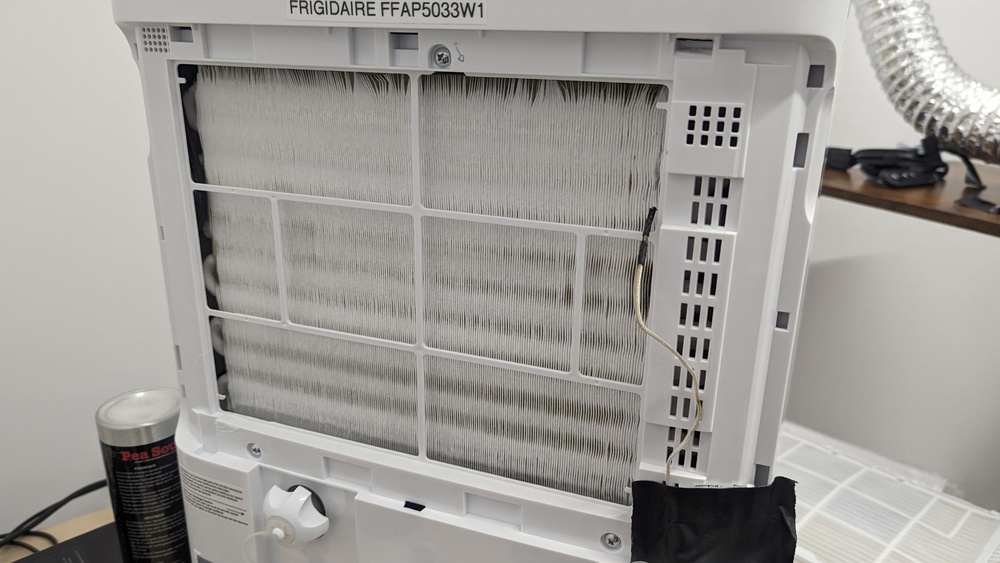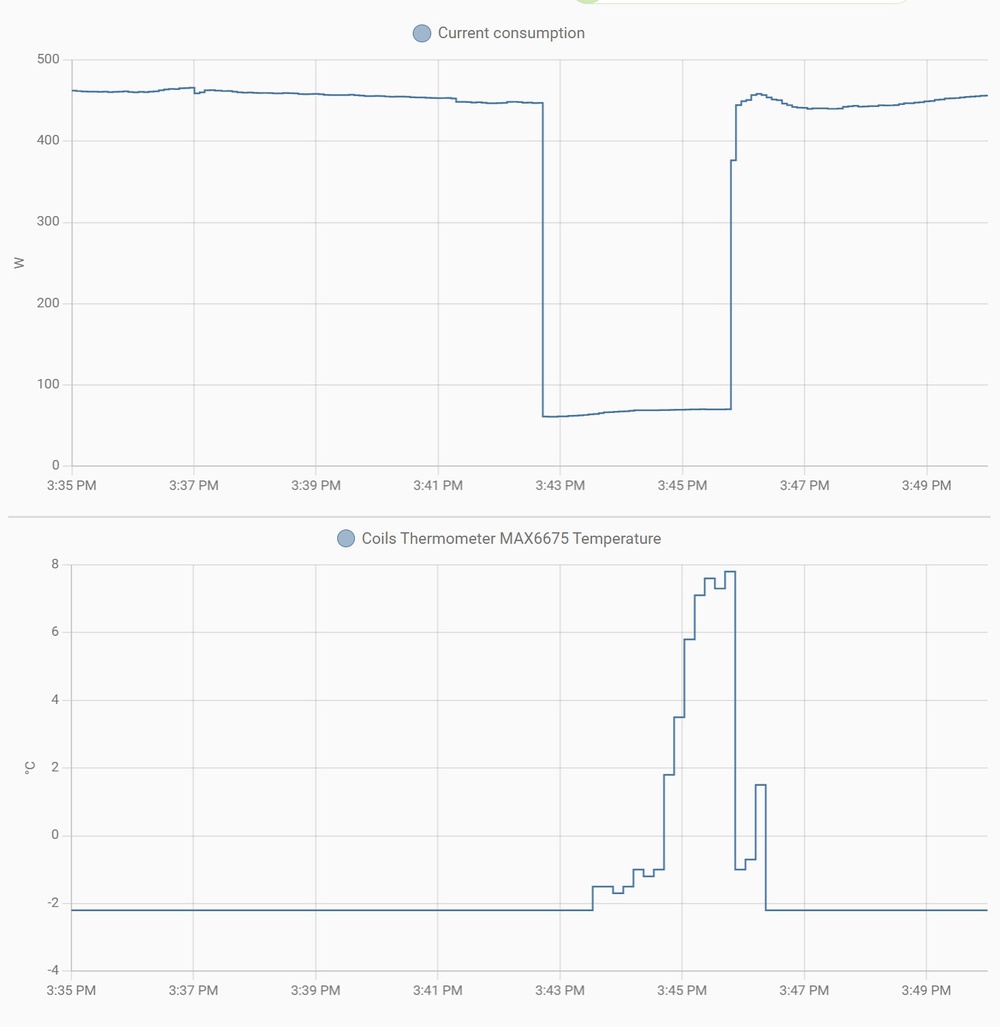- Table of Contents
- Intro
- Standard Ratings Were Confirmed by Our Testing
- Environmental Influences Split Our Test Into Two Phases
- The Important Role of Airflow in Dehumidification Efficiency
- Smarter Dehumidifiers Would Adjust the Fan Speed
- Lower Airflow Could Accelerate Frost Forming
- Choosing the Correct Airflow for Optimal Dehumidification
- Comments
Consider Lowering Your Dehumidifier's Fan Speed
Smarter Dehumidifiers Could Outperform Existing Ones
After testing 20 dehumidifiers, we uncovered the crucial role of airflow in dehumidification efficiency. Although we might intuitively set the fan speed to full blast when we want to dehumidify our environment quickly, using lower fan speeds can be noticeably beneficial in some situations.
In fact, we realized that the temperature difference between the dewpoint and the dehumidifier's coils plays a huge role in dehumidification efficiency. The larger the difference, the higher the dehumidification efficiency; airflow has been shown to play a major role in increasing this temperature difference.
Standard Ratings Were Confirmed by Our Testing
Our method of testing the dehumidifiers was to dehumidify the room from a specific Relative Humidity (RH) value to a specified lower RH value starting at a set temperature.
During our test, the device runs for a certain amount of time until we achieve the desired RH level. During this time, the power consumption is logged along with humidity and temperature values to report the capacity and efficiency of the dehumidifiers and their effect on the room's temperature stability.
At the end of the test, when the desired RH level is reached, the amount of water that was pulled from the air is measured. Then, we calculate the dehumidifier's capacity in LPD (liters per day) and PPD (pints per day). We also calculate the temperature rise between the test's start and end.
After calculating the total amount of power the device consumed during the test, we calculate the dehumidification efficiency in L/KW (liters per kilowatt).
| Dehumidifier | Tested Capacity (PPD) | AHAM Capacity (PPD) | Tested/AHAM capacity ratio |
| Frigidaire FFAD5033W1 | 31 | 50 | 63% |
| Honeywell TP70AWKN | 31 | 50 | 62% |
| Danby DDR040EBWDB | 25 | 40 | 62% |
| Frigidaire FFAP5033W1 | 30 | 50 | 61% |
| Midea MAD35S1QWT | 21 | 35 | 59% |
| Midea MAD50PS1QWT | 31 | 50 | 62% |
| Frigidaire FFAP5034W1 | 31 | 50 | 61% |
| Midea MAD50PS1WS | 31 | 50 | 62% |
| GE APYR50LC | 32 | 50 | 64% |
| Midea MAD35PS1QGR | 21 | 35 | 60% |
| hOmeLabs HME021002N | 22 | 35 | 62% |
| Whirlpool WHAD50PCW | 32 | 50 | 65% |
The table shows that our test results aligned with the standard advertised capacity. All dehumidifiers tested around 60% of their AHAM-rated capacity.
The distinction between advertised and AHAM-rated is important in some cases. The Honeywell TP70AWKNR advertises as a 70PPD dehumidifier. However, according to the updated testing conditions from AHAM post-2019, the same dehumidifier is rated as 50PPD.
The Waykar PD160B advertises as an "up to 34PPD" dehumidifier. However, according to the testing conditions provided by AHAM post-2019, its capacity is only 8.5PPD.
Environmental Influences Split Our Test Into Two Phases
Assuming one cubic meter of air weighs ~1.2kg, our ~30m3 room contains 37 kilograms of air.
At 70% RH and 25° C, the room's air has a humidity ratio of around 14g/kg (14 grams of water in 1 kilogram of dry air). This equates to around 518 grams (518 mL) of water in our room's air.
At 40% RH and an average of 26° C (temperature rise due to heat generated by the dehumidifier), the room's air has a humidity ratio of around 8.4g/kg. This equates to around 311 grams (311 mL) of water in our room's air.
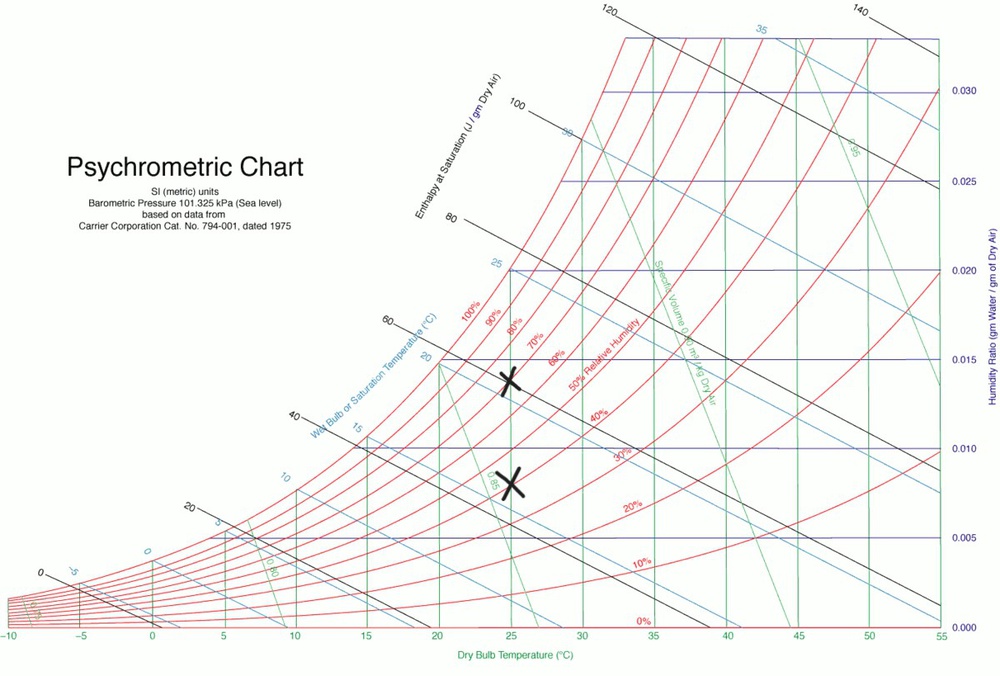
According to the numbers above, the amount of water that needs to be extracted from the room's air to get it from 70% to 40% RH is 207mL. However, the amount of water extracted at the end of the tests always came between 260mL and 300mL, which is noticeably higher than 207mL.
Excess water comes from the environment (leakage), construction materials, and objects placed in the same room as the dehumidifier. Most common household objects, like furniture, drapes, curtains, wooden objects, and carpets, can hold humidity, as can structural wood and concrete.
Relative humidity (RH) is the ratio between actual water vapor pressure and saturation water vapor pressure. Actual water vapor pressure is the amount of water vapor present in the air at a given moment. On the other hand, saturation water vapor pressure is the maximum amount of water vapor that can be in the air at a given temperature; past this point, you can see condensation start to happen. When humid air is introduced into the room, high water vapor pressure will be imposed on the previously mentioned objects and materials. This will force moisture inside of them. Dehumidifying a room changes the relative humidity of the environment, causing whatever stored humidity in the materials to start releasing in the room to reach a new equilibrium.
Our testing room has an ambient humidity level of around 47%. This means that whenever the water vapor pressure drops, and thus the RH drops, the walls, floors, and objects in the room start releasing moisture to keep the ambient air at 47% RH.
We observed that the dehumidification process was split into two phases. The first phase (orange curve) was dehumidifying the body of air inside the testing room until the relative humidity reached around 47% to 50%, which was the ambient humidity condition of the room. At this point, the second phase of the dehumidification process (blue curve) started. In this phase, the environment in the room started emitting water vapor back into the air to try to keep it around 47% RH. This is why you can observe a different trend line of the phases. Standard testing, as defined by the AHAM, is very similar to the second phase of our testing.
However, this type of testing doesn't account for how dehumidifiers react and perform in varying humidity and temperature levels, as it maintains a steady 60% RH level throughout the test. In addition, the temperature is also held steady at 65°F, which indicates that this test doesn't address the temperature stability of the dehumidifier. However, this type of testing is necessary to provide direct and standardized performance comparison between all different shapes and sizes of dehumidifiers.
This phase is more demanding for the dehumidifiers. We observed that the smaller the dehumidifier, the harder it is to reach 40% RH. This means that the coils can't cool down enough to effectively dehumidify. Looking at the coil temperature, we wondered if we could help the coils cool down by reducing the airflow that goes through them.
The Important Role of Airflow in Dehumidification Efficiency
During our testing, one 50-pint dehumidifier (Whirlpool) stood out, scoring slightly higher than other 50-pint dehumidifiers in capacity and efficiency. Interested in knowing why, we retested it back-to-back with other similarly sized dehumidifiers to confirm that it wasn't a fluke.
We noticed that the Whirlpool had a lower airflow compared to the other 50-pint dehumidifiers. It even had lower airflow than the Danby 40-pint. This piqued our interest in the effect of airflow on dehumidification.
We decided to run another 50-pint dehumidifier (Frigidaire) with a similar airflow at low fan speed. Surprisingly, the Frigidaire, at its lowest fan speed, performed better than the Whirlpool.
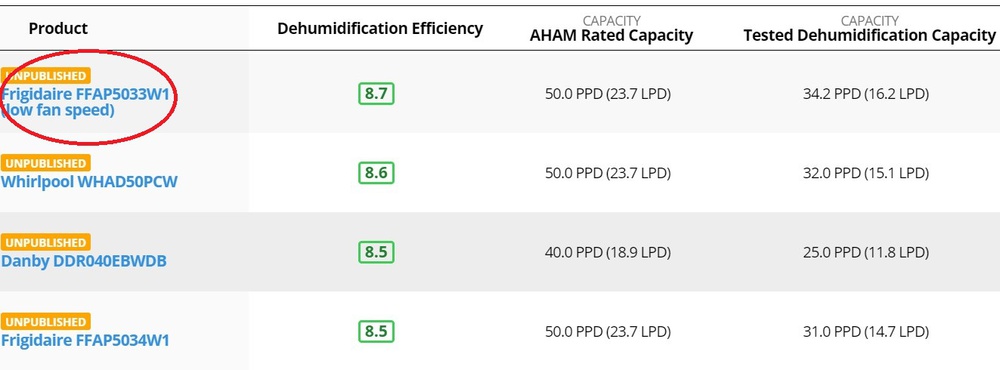
At its lowest fan speed, the Frigidaire completed the test 5 minutes faster than at its highest fan speed. In this graph, the orange line shows the Frigidaire's performance at its highest fan speed, while the blue line shows its performance at its lowest fan speed.
We observed that the compressor drew a little more power at low fan speed than at high fan speed. The total peak power consumption difference between the two scenarios was 8 watts (W). However, this number includes the fan motor power consumption which differed by 16W. As such, the difference in the compressor's power consumption between low and high fan speed was 24W. This represents only a peak increase of less than 5% in the compressor's power consumption. However, the 5-minute difference represents a decrease of almost 18% in time.
You can observe the more noticeable difference in the coils’ reaction to different airflow. In the first figure below, we can see that at low fan speed, the coils cooled down very quickly right after the compressor started and reached a temperature as low as 3.5°C. In the second figure, at the highest fan speed, the coils took significantly longer to cool down and only reached 5.3°C.
At lower airflow, less air is circulating over the evaporator coils. This means that less sensible energy is wasted on warming up the coils. At the same time, since the coils are cooling down faster, more latent energy than sensible energy is being exchanged with the air. Latent energy is the energy used to condense water vapor into liquid. However, sensible energy is the energy used to only change the temperature of the air without condensing it. Finally, the larger temperature difference between the dewpoint and the coils' temperature increased the dehumidification efficiency at low fan speed.
After further data analysis of other dehumidifiers, we observed a trend correlating efficiency to airflow.
For example, our test's four least efficient dehumidifiers were the Midea Cube 20-pint, the Waykar 8.5-pint, the Frigidaire 35-pint, and the AGLucky 9-pint. The Frigidaire 35-pint, which has the highest airflow we've tested, scores as low as the other much lower-capacity dehumidifiers. At the same time, the AGLucky, which is almost identical in capacity to the Waykar, scored better in efficiency thanks to its significantly lower airflow.
The Midea Cube 20-pint scored the lowest efficiency among refrigerant-based dehumidifiers. This could be explained by its relatively high airflow compared to similarly sized dehumidifiers.
We decided to further test the airflow effect on the dehumidifier's performance. As such, we modified a hOmeLabs 50-pint dehumidifier so that we can control the fan speed manually using a TRIAC dimmer.
We let the dehumidifier run in our testing room for a few hours at maximum fan speed, and we noticed a plateau that started forming at around 30% RH and 26°C. We then slowed down the fan using the TRIAC dimmer to a speed lower than the lowest fan speed of the stock device.
When we reduced the fan speed, we noticed a jump in the compressor's power consumption from 520W to 553W. At the same time, the humidity of the air leaving the dehumidifier started dropping while its temperature increased. This had a noticeable effect on the dehumidification rate, which overcame the plateauing that we noticed at maximum fan speed.
The temperature increases of the dehumidifier's exiting airflow brought to our attention the fact that reducing the airflow too much could result in the compressor overheating. Compressors inside dehumidifiers aren't usually placed in the path of airflow. As such, the compressor relies on the refrigerant to cool itself down to avoid damage.
At maximum fan speed, the dehumidifier started plateauing at 30% RH and 26°C. In these conditions, the dewpoint is at around 7.1°C, while the evaporator coil temperature hovered around 5.2°C. A difference of less than 2 degrees between the coil's temperature and the dewpoint makes it increasingly difficult for the dehumidifier to further dehumidify the room.
However, after reducing the fan speed and thus the airflow, the coils cooled down even further. When the coils reached around 1°C, we stopped reducing the fan speed to avoid frost forming and thus prevent the dehumidifier's defrost function from kicking in.
With a temperature difference of 6°C between the coils and the dewpoint, we observed an increase in the dehumidification rate.
Notably, our test addresses airflow's impact on dehumidification in relatively high temperatures (25°C). We can't say for sure how this will translate in lower temperatures (15°C), as sensible and latent energy might play different roles.
Smarter Dehumidifiers Would Adjust the Fan Speed
After our testing and investigation, we wondered how a smart dehumidifier would adjust its fan speed to achieve optimal dehumidification performance regardless of the room's conditions.
Looking at the 20 dehumidifiers we've tested, we can confirm that cost-cutting impacted the design decisions. Almost all the dehumidifiers tested had AC motors, and all of them had three fan speeds or less.
As an exercise to apply all the different pieces of information we've gathered during this test bench, we wanted to highlight what would be needed to have a great smart dehumidifier. To start, a smart dehumidifier would need a DC motor with almost limitless fan speed control. This would allow the dehumidifier to always be at the right fan speed. Adding a thermometer and hygrometer to the dehumidifier would let it know the exact dewpoint of the air in the room. Lastly, measuring the temperature of the evaporator coils would allow the dehumidifier to know the difference between the coil temperature and the room's dewpoint.
With all these data acquisition points, the user would only need to input the desired humidity and the room size on the dehumidifier. The dehumidifier would then be able to adjust the fan speed to have the coils reach the exact temperature needed to achieve the highest dehumidification rate while also favoring higher airflow for larger rooms.
Lower Airflow Could Accelerate Frost Forming
We've established that the dehumidifier's evaporator coils can reach temperatures lower than 0°C. When this happens, frost will start to form on the coils, dropping the temperature even further. This frost will obstruct airflow, causing more frost and ice buildup until the airflow is totally blocked, overstressing the fan motor and compressor. Lower airflow could accelerate this process further as the evaporator coils would cool down and reach subzero temperature even quicker.
Most manufacturers implement a defrost function to mitigate frost buildup and avoid damaging the dehumidifier. This function monitors the temperature of the evaporator coils and stops the compressor if the temperature drops below zero. Turning off the compressor while keeping the fan on warms up the evaporator coils and melts the frost and ice buildup that occurs when the temperature drops below zero.
We were able to have frost forming on the coils with our hOmeLabs dehumidifier, as shown above. About 20 minutes after the evaporator coils had reached subzero temperatures, the compressor turned off for 3 minutes while keeping the fan on. This was enough to melt all the ice and frost that had formed on the evaporator coils.
Frigidaire did not clearly mention that any of their four dehumidifiers we tested had defrost functions. The only related feature mentioned in the spec sheet was that the dehumidifiers can operate at temperatures as low as 5°C. To be confident in our results, we decided to run one of the Frigidaire dehumidifiers through the same defrost test as the hOmeLabs.
We observed behavior similar to that of the hOmeLabs. Twenty minutes after its evaporator coils reached subzero temperatures, the compressor turned off for 3 minutes while keeping the fan on. This, like on the hOmeLabs, was enough to melt all the frost and ice that had formed.
When we ran the Frigidaire through the defrost test at low fan speed, we noticed that the frost forming was accelerated by around 15% compared to high fan speed.
Choosing the Correct Airflow for Optimal Dehumidification
In conclusion, we can say that the standard ratings of portable dehumidifiers defined by AHAM and Energy Star are indeed relevant. They give an objective measurement of the capacity and efficiency of dehumidifiers. However, we've also seen that they have limitations, as they only address a specific environmental situation.
Airflow, however, has an unexpectedly significant effect on dehumidification efficiency. Counterintuitively, lowering the fan speed proved more beneficial in some situations.
We cannot say that high airflow is not important in portable dehumidifiers. On the contrary, larger rooms, for instance, can benefit from higher airflow. High airflow will ensure that the room's air is well circulated and mixed, which in turn means that more humid air will be in contact with the evaporator coils. Too low airflow in such environments can cause local dehumidification, where the air is not being circulated throughout the room, and only a small portion of it near the dehumidifier is being dehumidified. In addition, as we've established, frost forming could be accelerated by low airflow.
A sweet spot of just enough airflow should be achieved for optimal dehumidification. This means that the larger the fan speed range, the better control you would have over airflow. The higher the highest fan speed, the better, while the lower the lowest fan speed, the better.
As such, if you want to dehumidify a large room, choose a dehumidifier with high airflow. If you already have a dehumidifier with insufficient airflow, then placing a fan or two away from and facing the dehumidifier is recommended. This will ensure that proper air mixing is achieved.
If the dehumidifier in your basement can't reach low enough humidity levels, you might benefit from lowering its fan speed and adding external fans to help with circulation.
Some environments require very low humidity levels (less than 30%) to be maintained to preserve special items, like books or antique possessions. In this scenario, lowering the dehumidifier's fan speed can noticeably help bring down humidity levels even further.
